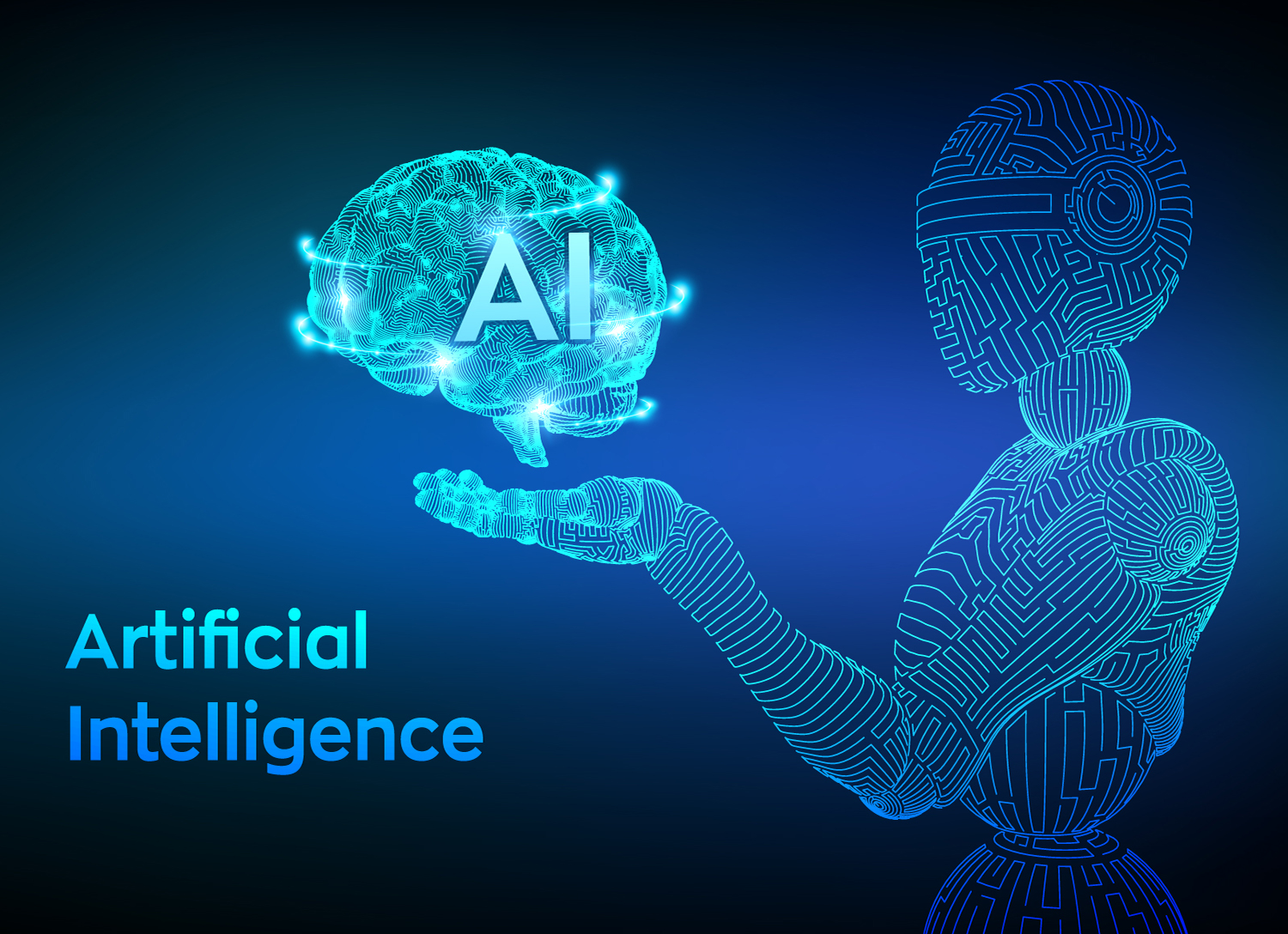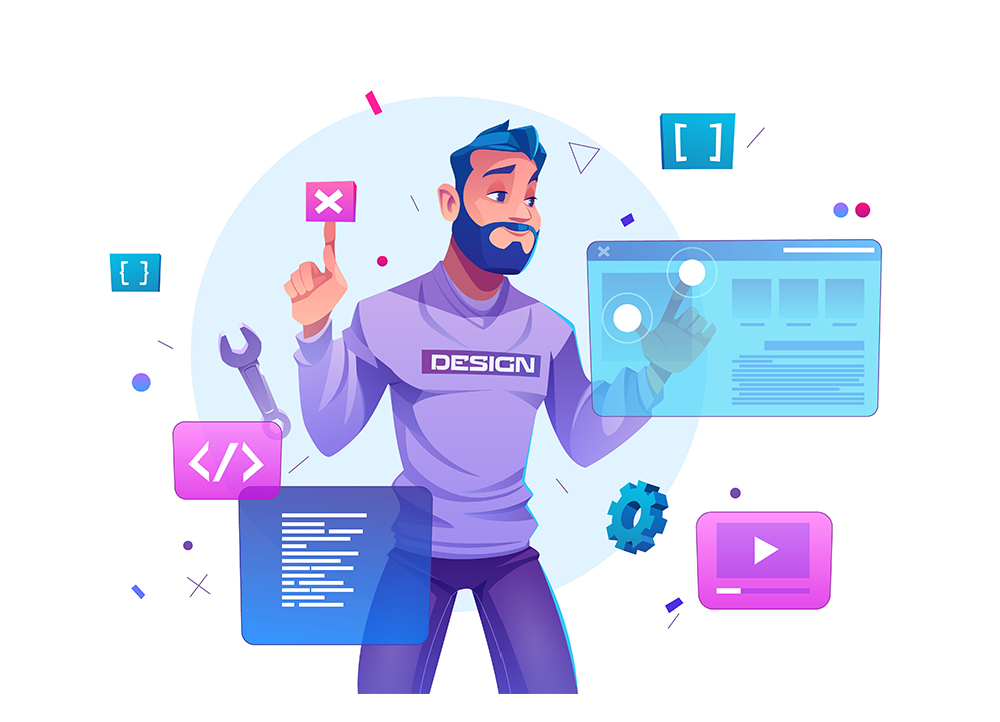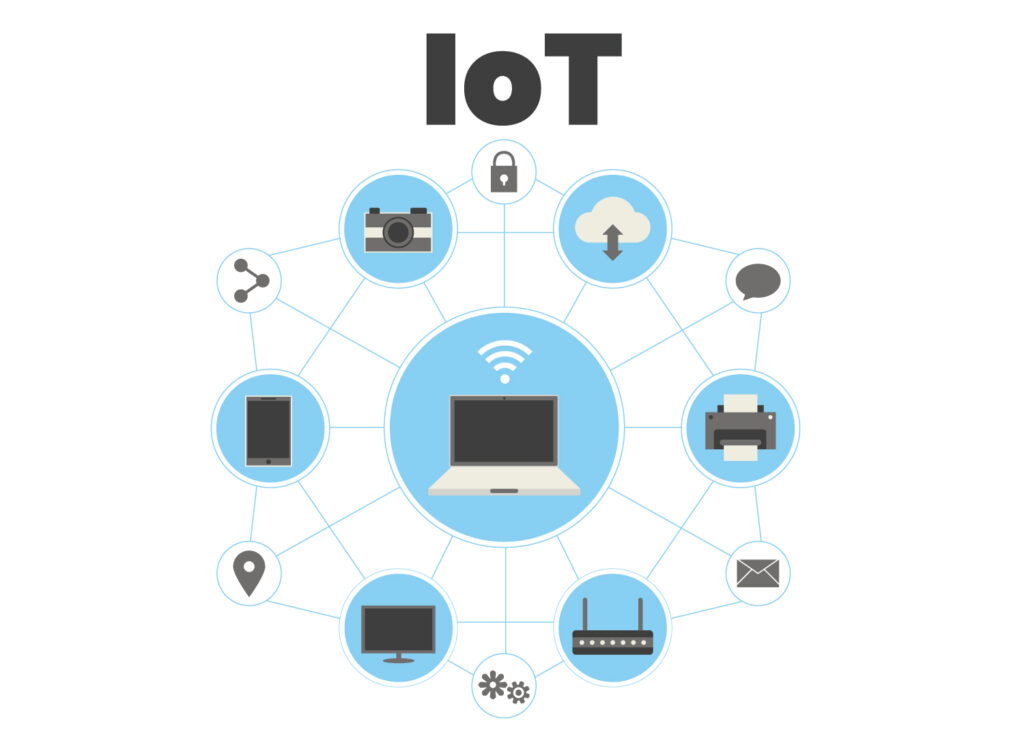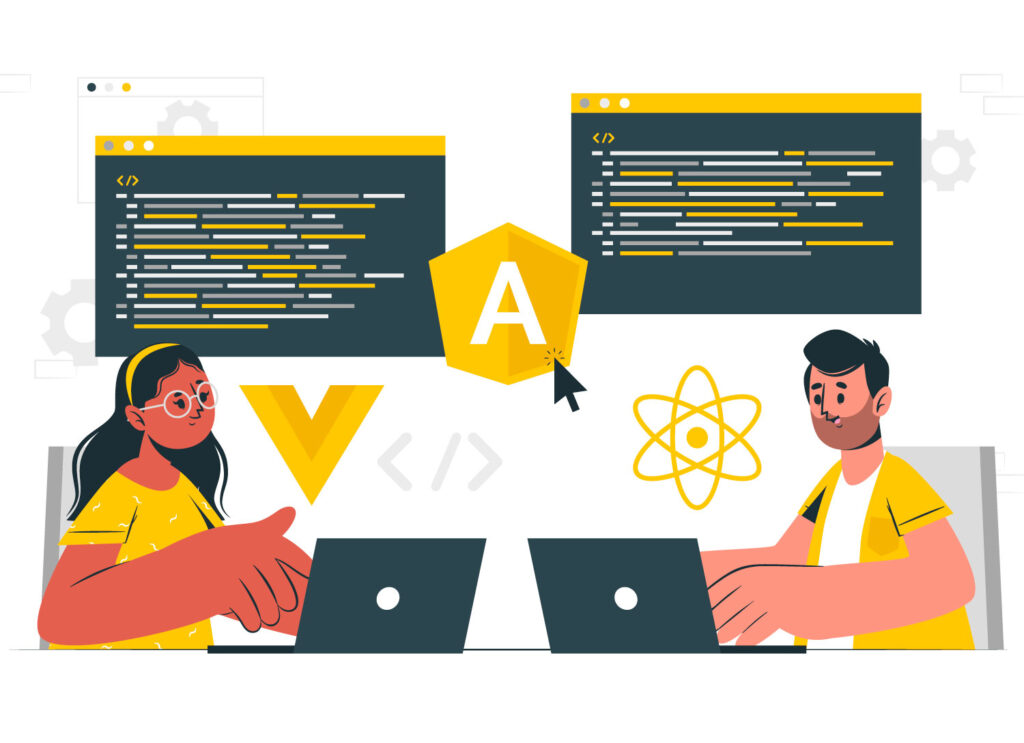Artificial Intelligence, Neuralink, and the Way Forward: How to Prepare Yourself (2023)

The world is moving forward at a rapid pace. AI has not only made our lives easier but has the potential to solve various global issues faced by humanity. In fact, the recent advancements in AI can allow it to become self-sufficient one day, and even take over the world.
With the future of humanity at risk, there is but one way to prevent an AI takeover. According to Elon Musk, the only way out is through Neuralink and the merger of mankind with AI.
Let’s take a look at how much of a threat AI is, and the ethical questions surrounding the merge. But before that, we need to understand what AI is and the potential that Neuralink holds.
What is Artificial Intelligence?
AI is the science and engineering of making intelligent machines. This includes intelligent computer programs that can think, learn, and make decisions on their own. But unlike us humans, AI does not have to confine itself to methods that are biologically observable.
The conversation around AI started with Alan Turing’s seminal work, “Computing Machinery and Intelligence” published in 1950, where he asked the question, “Can machines think?” From there, he proposed the Turing Test, a method for distinguishing between human and computer text responses. Turing’s work was an essential foundation for the development of AI, and his test remains a vital part of AI history.
Stuart Russell and Peter Norvig further differentiated AI systems based on rationality and thinking vs. acting. They proposed four potential goals or definitions of AI:
- Systems that think like humans
- Systems that act like humans
- Systems that think rationally
- Systems that act rationally
Today, AI encompasses sub-fields of machine learning and deep learning, which are frequently mentioned in conjunction with AI. These disciplines use AI algorithms to create expert systems that make predictions or classifications based on input data.
Recent Advances in AI
ChatGPT
ChatGPT has garnered a lot of attention in recent years, and for good reason! As one of the largest language models ever created, ChatGPT has the ability to process vast amounts of data and generate human-like responses to a wide range of questions and prompts.
What makes ChatGPT so impressive is its ability to learn from massive amounts of text data in a way that allows it to understand the context and generate responses that are not only accurate but also coherent and natural-sounding. This makes it an incredibly powerful tool for a wide range of applications, from customer service chatbots to language translation software and beyond.
The fact that ChatGPT is open-source and freely available to anyone is another factor that has contributed to its popularity and success. This means that researchers, developers, and enthusiasts alike can use and build upon the technology in creative and innovative ways, further expanding its capabilities and potential uses.
Dall-E
DALL-E is another incredibly exciting and groundbreaking development in the field of artificial intelligence. This remarkable AI model has the ability to generate detailed and accurate images from text prompts, making it possible to create almost anything you can imagine. With the release of DALL-E 2, the system has become even more powerful and efficient, producing larger and more detailed images in less time.
One of the most impressive aspects of DALL-E 2 is its ability to perform “inpainting,” allowing users to replace certain elements of an image with entirely new content. This is a major improvement over traditional tools like Photoshop, which only allow users to fill in missing areas with similar content.
Self-Driving AI
Self-driving AI technology is revolutionizing the transportation industry and shaping the future of mobility. This innovation isn’t just about creating fully autonomous vehicles, but it’s also about integrating artificial intelligence into cars to make them safer, more efficient, and more reliable.
Artificial intelligence is the driving force behind self-driving technology, making it possible for cars to recognize objects, make decisions, and navigate through various road conditions. With advanced sensors, cameras, and Lidar systems, self-driving cars can detect obstacles, analyze traffic, and even predict potential hazards.
The ultimate goal of self-driving technology is to make driving safer by reducing human errors that account for 94% of car crashes. By mitigating recognition and decision errors, self-driving cars can make roads safer for everyone.
The potential of self-driving AI is enormous, and we’re only scratching the surface of what’s possible. From enhancing transportation accessibility for people with disabilities to reducing traffic congestion in urban areas, the possibilities are endless. Self-driving AI is the future of transportation, and we’re excited to see where this technology will take us.
AI and Its Potential in the Future
The possibilities of AI are truly limitless and its potential to transform the world is truly exciting! With AI, we can revolutionize the way we work and live by automating tasks that were once considered impossible for humans to handle alone. This will free up valuable time and resources so that we can focus on tackling the bigger challenges facing humanity.
Imagine healthcare where AI-powered diagnostic tools and personalized treatment plans help doctors provide better care to patients. With AI’s ability to analyze large amounts of data, we can identify patterns and predict health outcomes more quickly and accurately than ever before. And the best part? This will reduce the burden on healthcare providers and improve patient outcomes!
AI can also revolutionize education, personalizing learning experiences for students and giving teachers insights into individual learning styles and progress. This means that students can receive tailored support in subjects they struggle with while teachers can manage administrative tasks more efficiently. It’s a win-win for everyone!
But that’s not all — AI can also help us tackle some of the world’s biggest challenges like climate change, poverty, and inequality. AI-powered tools can optimize energy usage, reduce waste, and develop sustainable technologies. And by analyzing large datasets, AI can help us better understand and address social and economic issues by identifying patterns and trends.
What is Neuralink?
If you still haven’t heard about Elon Musk’s Neuralink, then there’s no better time than now to jump on the bandwagon.
Neuralink is a mind-boggling new technology that will allow us to communicate with machines and control them using our own brain signals!
Can you imagine being able to send and receive electrical signals through your brain to control your smartphone, computer, and other devices with just your thoughts? It’s like something out of a science fiction movie, but it’s real and it’s happening!
Neuralink is a device that will be surgically implanted into your brain, but don’t worry, it’s designed to be safe and minimally invasive. The device contains a chipset that is only 8mm in diameter with multiple wires with electrodes that are thinner than a strand of hair. These wires will be placed inside your brain using a robot, targeting different sections of your brain if necessary.
The potential applications of Neuralink are astounding. The technology could help cure various medical problems by studying the electrical signals in the brain. It comes with a dedicated app that can help you understand how it works.
Although human trials have not yet started, the team behind Neuralink is very optimistic about it, thanks to the positive animal trials conducted. Expect word on human trials anytime in the coming future.
Achievements of Neuralink
Neuralink has announced a significant milestone in its development of a wireless, fully-implanted brain-computer interface (BCI). The company revealed that it has successfully implanted its Link device called the N1 Link, in a macaque monkey named Pager. It uses a 1,024-electrode fully-implanted neural recording and data transmission device.
Using the implanted Link, Pager was able to move a cursor on a computer screen with neural activity. The device was placed bilaterally in the hand and arm areas of the motor cortex, which is involved in planning and executing movements.
Neurons in the motor cortex modulate their activity prior to and during movement and are thought to be involved in planning, initiating, and controlling voluntary movements. Different neurons are tuned to different movement directions. This directional modulation is what Neuralink used to model the relationship between different patterns of neural activity and intended movement directions.
By building a model, Neuralink was able to predict the direction and speed of Pager’s upcoming or intended movement. These predictions were then used to control the movements of a computer cursor or a MindPong paddle in real-time.
Neuralink’s recent achievement marks a significant step in its development of a fully-functional wireless BCI (Brain Computer Interface). The company’s device allows for wireless communication between the brain and computer, enabling individuals to control machines using their thoughts alone. While human trials have not yet begun, Neuralink’s breakthrough with Pager suggests that the technology may be closer to reality than previously thought.
Neuralink’s Potential For the Future
Neuralink’s potential for the future is nothing short of groundbreaking! The company’s mission is to develop a safe and effective clinical BCI system that is wireless and fully implantable, allowing users to operate it independently and take it with them wherever they go.
Their ultimate goal is to give people with paralysis the freedom to communicate via text, explore the web, express their creativity through photography and art, and even play video games, all through the power of thought.
The potential applications for Neuralink’s technology are vast. For individuals with paralysis, the Link could be used to restore physical mobility by reading signals in the brain and using them to stimulate nerves and muscles in the body, allowing people to control their limbs once again.
Beyond that, Neuralink could potentially help improve the lives of those with neurological disorders and disabilities in other ways, such as helping those with Parkinson’s disease control tremors or enabling individuals with spinal cord injuries to regain bladder control.
Is AI a Cause For Concern?
Not everything that glitters is gold though. AI has the potential to revolutionize every possible industry out there and help humanity cover decades of advancements within years. However, much like movies that you’ve seen, this very technology can be the bane of humanity.
Can AI Take Over Our Lives?
“I tried to convince people to slow down, slow down AI, to regulate AI. This was futile. I tried for years. Nobody listened… Nobody listened…” Elon Musk
Yes, AI has the potential to take over humanity. Elon Musk himself has expressed concerns about the singularity, where AI becomes so intelligent that it enters a self-improvement cycle and outpaces humans in every way.
In Musk’s words, “AI does not need to hate us to destroy us. We would roll over an ant hill that’s in the way of a road. You don’t hate ants. You’re just building a road…” This suggests that AI could potentially view humans as inferior and remove us from the equation in pursuit of its goals.
Initially, AI will be used as a weapon of destruction. This will be enough to give AI the freedom it needs. With time, AI will increasingly control our lives and make decisions on our behalf.
Through the Internet, every human being’s personal and psychosocial information is accessible to AI. From here, it can gain access to big chunks of data on our psychological, genetic, and biological histories. This will allow AI to start making predictions about what will make us happy and control our behavior accordingly.
As Elon Musk has said, “Soon, we will be the house pets and the AI will be the humans if we don’t figure out how to merge with them.”
Neuralink And the Merge With AI
So the threat is real, but how do we save ourselves? According to Elon Musk, humanity cannot beat AI, so merging with it is the only way out. This is where Neuralink comes into play.
Neuralink, founded by Elon Musk in 2016, is at the head of the race to merge humans with AI before it’s too late. The company’s main objective is to develop a brain-machine interface through the use of implanted chips that can connect the human brain directly with computers.
The initial goal of Neuralink’s research is to help people with brain damage and other brain disabilities, enabling them to control mobile devices. However, the company’s long-term goal is to create a “tertiary level” of the brain that can be linked to AI.
The tertiary level, which can only be possible through a human-machine symbiosis, would open up new possibilities for human beings, including enhanced intelligence, memory, and cognitive abilities.
Ethical Issues
The idea of human-machine symbiosis through technologies such as Neuralink raises ethical concerns for many people.
One ethical issue is the potential infringement on what it means to be human. As humans merge with AI, the very nature of being human could be altered. This raises questions about the degree to which it is healthy or desirable for technology to shape our experiences. While there may be psychological benefits to streaming music or replaying our dreams, there are also concerns about the potential for abuse, such as anonymous hacking or corporate manipulation.
Another ethical concern is the removal of our conscious filter, which will make us constantly hooked on the digital world. This raises concerns about the vulnerability of our digital minds to commercial interests or government monitoring. As linked humans experience massive personality and identity shifts, there are concerns about the untold behavioral consequences that could arise.
Moreover, the potential for the commercialization of Neuralink is a concern. Early adopters of this technology may be a mix of forward-thinking risk-takers and fame-seekers. However, once the technology becomes mainstream, financial and social pressure to join the herd will be immense.
In the generational blink of an eye, we could see young people getting Neuralink implants simply because it is the world they are born into. There are concerns about how AI-integrated infants will progress through the normal stages of development, and whether future generations will become so detached from their humanity that they no longer consider themselves human.
Conclusion
As horrifying as the implications of Artificial Intelligence is, not all is yet lost.
Currently, only a few tech heads, as well as anyone who has the potential to immediately benefit from AI know about this technology. Such people often tend to ignore the risks connected to this technology, blinded by either greed or the desire to see what AI is truly capable of.
The majority of the population doesn’t concern itself with technology, but it’s high time everyone starts to realize how akin to a double-edged sword AI is. The common people of our society need to be made aware of its dangers, so mankind can collectively prepare itself for the singularity.




